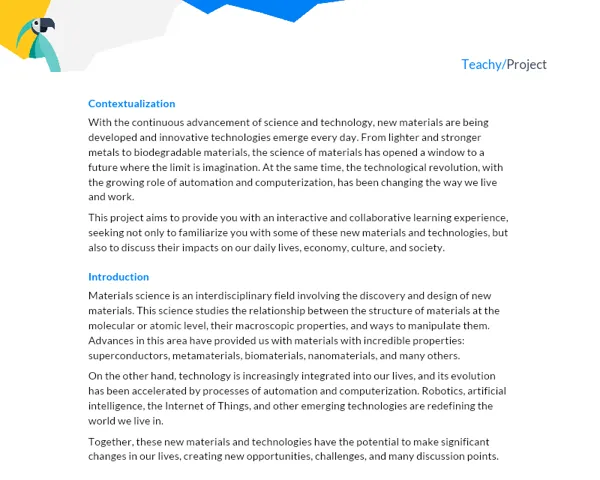Contextualization
Theoretical Introduction
Environmental balance is a crucial concept to understand how ecosystems function and the indispensable dependence of life on Earth on this balance. Essentially, environmental balance refers to the cohesion and stability that exist between the biotic (living beings) and abiotic (physical and chemical elements) elements of an ecosystem. This balance is achieved through the constant interaction of these elements, governed by natural laws that control the availability of resources and the dynamics of populations.
However, human action has significantly altered this balance. Since the Industrial Revolution, humanity has exploited natural resources in a way never seen before, leading to major changes in ecosystems, such as deforestation, water pollution, and the emission of gases that intensify the greenhouse effect.
The current situation demands that we have a deep understanding not only of the concept of environmental balance but also of how humans can contribute to the preservation and restoration of this balance.
Contextualization
The theme of environmental balance is of vital importance in today's world. The United Nations Conference on Environment and Development (Rio 92) already emphasized the need to achieve a balance between economic development and environmental preservation. Currently, with the growing awareness of global climate change and its potentially calamitous impacts, the need to maintain and restore ecological balance has become a central topic in political and social discussions.
In this period of great changes, education can play an important role in shaping more conscious citizens capable of making informed decisions that contribute to a more sustainable world. It is in this context that the present project fits.
Practical Activity: "Bioconstruction: A Step Towards Environmental Balance"
Project Objective
The project aims to promote understanding and appreciation for environmental balance through the study and practice of bioconstruction. In addition, students will learn about the connections between natural sciences and technology and how they can be used to achieve more sustainable solutions.
Detailed Project Description
Students, divided into groups of 3 to 5 members, will have to design and build a model of a house or structure that incorporates principles of bioconstruction and sustainability practices. Next, the groups will have to produce a detailed report explaining the design and construction of their model, as well as the environmental impact of the incorporated practices.
This activity will give students the opportunity to explore topics such as the water cycle, carbon cycle, nitrogen cycle, solar energy, wind energy, biodegradable materials, recycling, composting, permaculture, and sustainable land use.
Required Materials
- Various recyclable materials (cardboard boxes, plastic bottles, bottle caps, old newspapers, etc.)
- Tape, glue, scissors
- Paint and brushes
- Clay (optional)
- Paper and pencil for project drawing
- Computer for research and report writing
Detailed Step-by-Step
-
Research: Before starting construction, groups must familiarize themselves with the concepts and practices of bioconstruction and sustainability. This includes learning about natural cycles, renewable energy, permaculture, and more.
-
Planning: Each group must develop a plan for their structure, including the ideal location (taking into account sunlight, wind, etc.), the materials they will use, and how they will incorporate sustainability principles.
-
Construction: Using recycled materials, groups will build their structures. They should be encouraged to be creative and innovative, using different types of materials and construction techniques.
-
Documentation: Throughout the process, students must document their progress by taking photos and making notes. They will incorporate this into their final report.
-
Report: Finally, each group must write a detailed report on the project. This report should include an introduction to the theme of environmental balance and bioconstruction, a detailed description of their structure and the reasoning behind their design choices, a discussion on the materials used and their environmental impact, and a conclusion summarizing what they learned during the project.
Project Deliverables
The project deliverables consist of the bioconstruction model and the written report. The report should complement the model by explaining the design details, the sustainability principles incorporated, the environmental impact of the materials used, and the lessons learned.
The report should be divided into four sections:
-
Introduction: Students should present the theme and its relevance, explain the basic principles of bioconstruction and sustainability, and describe the objectives of their project.
-
Development: This section should include the structure description, the explanation of the bioconstruction and sustainability principles used, and an analysis of the environmental impact of the materials used.
-
Conclusions: Students should reflect on what they learned during the project and how these lessons apply to environmental balance in a broader context.
-
Bibliography: Finally, the report should include a list of all sources consulted during the project.
Students will be evaluated on their ability to work as a team, manage their time efficiently, communicate their ideas clearly and effectively, and apply their theoretical knowledge to practice.

